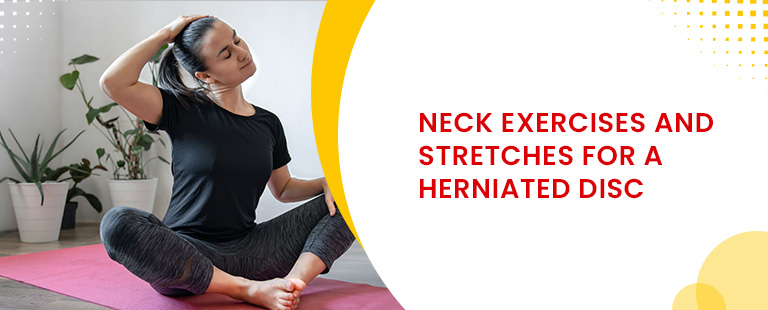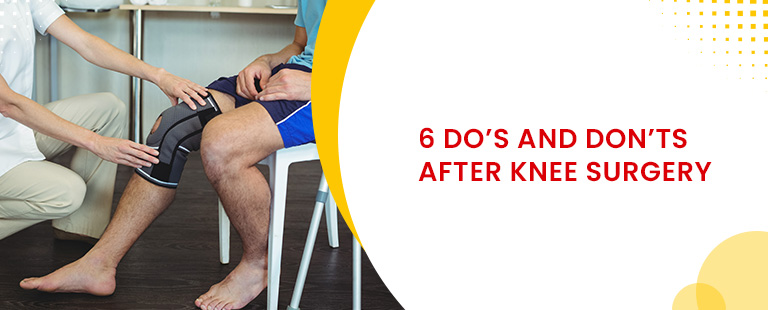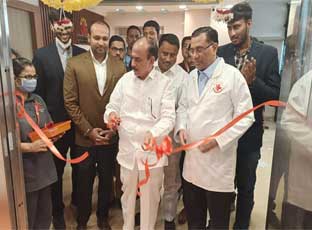What is a herniated disc?
A herniated disc, also known as a slipped, or bulging disc, is extremely painful. It is a common condition in early to middle-aged people. It is caused when too much pressure is put on the spine.
The human spinal cord is composed of bony vertebrates separated by a disc. These discs are:
- Act as a cushion of joints at the time of impact
- Allow spine movement
- Keep vertebrae in place
When the soft inside of the disc, the nucleus, leaks through the rigid outer portion, it leads to a herniated disc. It tends to irritate the surrounding area.
Movements that lead to herniated discs are:
- Lifting
- Bending
- Pulling
- Twisting
- Bad posture and poor ergonomics.
Herniated discs can lead to pain and weakness in the area whose nerves are impacted. However, it can be relieved with exercises for herniated discs.
Cervical Radiculopathy
The herniated disc in the upper part of the spine can cause pain in:
- Shoulder
- Arm
- Hand
This pain is called cervical radiculopathy, also known as a pinched nerve.
Treatment
There are various treatment options available for herniated discs; doctors recommend trying medications, rest and physical therapy before deciding on surgery. Several herniated disc exercises can improve your condition faster. The aim is to push the disc back away from the nerve root.
However, it is best to have your doctor evaluate the exercises for herniated discs before you attempt them.
Herniated disc exercises to relieve neck pain
Some of the most effective herniated disc exercises to get rid of neck pain are:
- Neck extension
Lie on the table with your neck inlined with the edge. Slowly lower the head backwards and let it hang. If this makes your pain severe or transfers the pain to the arm, discontinue this slip disc exercise. Hold the position for 1 minute and then take the rest for 1 minute. Repeat this exercise for cervical pain 5 to 15 times. - Neck extension with head liftLie on your bed or table with your head hanging off and arms by your side. Start lifting your head slowly and gently, extending the neck. Just hold in this position for 5 to 10 seconds. Repeat this 5 to 15 times.
- Neck retractionLie on your bed on your back and keep your hands by your side. Tuck your chin in your chest, making a double chin. Hold the position for 5 to 10 seconds. Repeat this 15 to 20 times a day.
- Shoulder retractionStand against a wall, or you can even sit. Keep your arms by your side and bend your elbows to 90 degrees. Keep your shoulder down and back and push the arm towards the wall, squeezing the blades together.
- Isometric holdSit tall, relax your shoulder and put your hand on your forehead. Without moving your head, press your hands into your head. Hold the position for 5 to 15 seconds and repeat this herniated disc exercise 15 times.
Neck stretches to relieve pain.
Stretching is effective for herniated discs. However, it tends to increase the pain and immediately stop stretching if it does too much.
- Lateral bendSit tall, relax your shoulder and tilt your head to one side as you touch your shoulder with your ear. Stay in the position for 30 seconds and repeat this slip disc exercise 3 to 5 times throughout the day.
- Scalene stretchSit tall and relax your shoulders. Hold the chair you’re sitting with your left hand and let your blade move down. Slowly move your right ear to your right shoulder and push it slightly backwards. Hold this position for 30 seconds, rest and repeat it 3 to 5 times a day.
- Neck rotationSit up tall and relax your shoulders. Gently turn your head to the right, do not over-twist your neck. Then repeat it to your other side. Hold this position for 30 seconds, and keep repeating it 3 to 5 times a day.
These are some of the most effective exercises for herniated discs to eliminate pain. However, one should always consult their doctor before attempting any slipped disc exercise. They can help you understand which exercise for cervical neck pain would be most effective.








